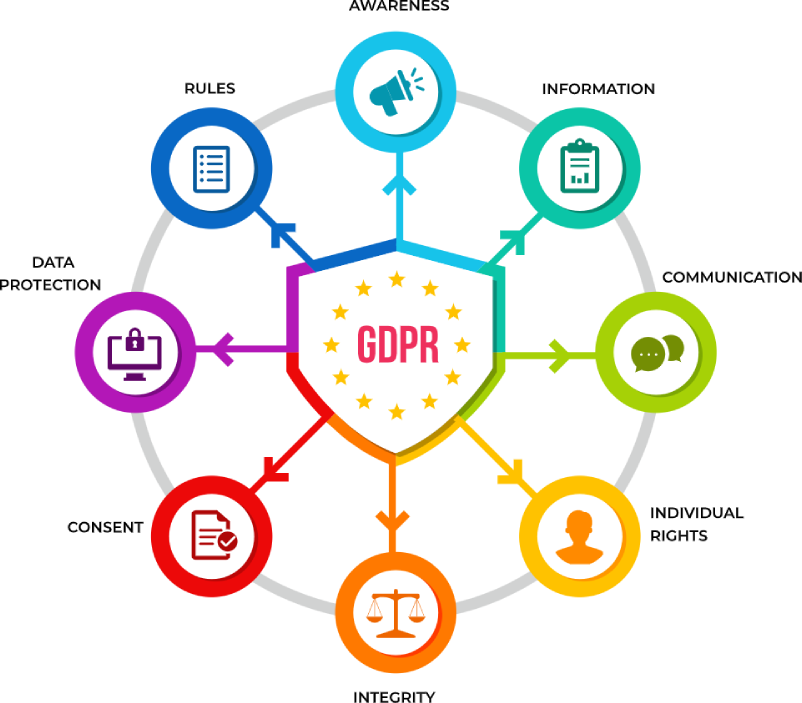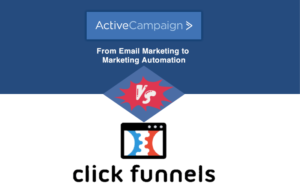Data Quality and Accuracy of Email ID Lists
Lets… have a look on Email ID Lists
When considering email ID lists, one of the foremost concerns is the quality and accuracy of the data they contain. The effectiveness of your email marketing campaigns relies heavily on the reliability of the email IDs provided by these lists.
Email ID list providers employ various methods to ensure the data they offer is accurate and up-to-date. These methods may include data verification processes, regular updates, and sourcing data from reputable sources. It’s crucial to choose a provider that prioritizes data quality to avoid issues such as high bounce rates, low deliverability, and potential damage to your sender reputation.
Table of Contents
Key Factors to Consider:
- Verification Methods: Look for providers that utilize robust verification methods to validate email IDs. This may involve techniques such as email validation, domain verification, and syntax checks to ensure the accuracy of the data.
- Data Sources: Consider where the email ID list provider obtains their data. Lists sourced from reliable sources such as opt-in forms, subscription lists, and reputable databases are more likely to contain accurate and permission-based email addresses.
- Update Frequency: Check how frequently the email ID list is updated. Regular updates are essential to ensure the data remains current and relevant. Providers that offer real-time or frequent updates can help maintain data accuracy over time.
- Quality Assurance Measures: Inquire about the quality assurance measures implemented by the provider. This may include quality checks, data cleansing processes, and adherence to industry standards to maintain data integrity.

Targeting Options for Email ID Lists
When it comes to email marketing, targeting the right audience is crucial for success. Email ID lists offer a range of targeting options to help businesses reach their desired audience with precision and relevance. Let’s explore some key targeting options available with email ID lists.
Demographic Targeting: Email ID lists often allow for demographic targeting, enabling businesses to tailor their campaigns based on factors such as age, gender, income, occupation, and education level. This allows for more personalized and relevant messaging to different segments of the audience.
Geographic Targeting: Geographic targeting allows businesses to focus their email campaigns on specific locations, whether it’s targeting customers in a particular city, state, region, or country. This can be particularly useful for businesses with localized products or services or those running location-specific promotions or events.
Industry-Specific Lists: Some email ID list providers offer industry-specific lists tailored to particular sectors or niches. This targeting option is beneficial for businesses looking to reach a specific audience within a particular industry or vertical.
Interest-Based Targeting: Interest-based targeting allows businesses to segment their email lists based on the interests and preferences of their subscribers. By analyzing subscriber behavior, engagement patterns, and preferences, businesses can send targeted content that resonates with their audience’s interests.
Behavioral Targeting: Behavioral targeting involves analyzing past behavior and interactions to predict future actions. Email ID lists can leverage behavioral data such as purchase history, website visits, email opens, and clicks to segment subscribers and deliver targeted content and offers based on their behavior.

Compliance and Privacy Measures for Email ID Lists
Ensuring compliance with regulations and maintaining the privacy of user data is paramount when utilizing email ID lists for marketing purposes. In an era of increasing data privacy concerns, businesses must prioritize compliance and implement robust measures to protect the privacy of their subscribers. Here’s a breakdown of key compliance and privacy measures for email ID lists.
1. GDPR Compliance: For businesses operating within the European Union (EU) or targeting EU citizens, compliance with the General Data Protection Regulation (GDPR) is essential. GDPR mandates that businesses obtain explicit consent from individuals before collecting and processing their personal data, including email addresses. Email ID list providers must adhere to GDPR guidelines to ensure lawful and transparent processing of personal data.
2. CAN-SPAM Act Compliance: In the United States, the Controlling the Assault of Non-Solicited Pornography and Marketing (CAN-SPAM) Act sets guidelines for commercial email messages. Compliance with CAN-SPAM involves including accurate sender information, providing a clear and conspicuous opt-out mechanism, and honoring opt-out requests promptly. Email ID list providers must ensure that their practices align with CAN-SPAM requirements to avoid penalties for non-compliance.
3. Opt-In Processes: Opt-in processes play a crucial role in maintaining compliance and respecting user privacy. Businesses should obtain explicit consent from individuals before adding them to email lists. This can be achieved through opt-in forms, checkboxes, or confirmation emails, ensuring that subscribers willingly provide their consent to receive marketing communications.
4. Consent Management: Effective consent management involves providing subscribers with control over their data and preferences. Email ID list providers should offer mechanisms for subscribers to update their preferences, unsubscribe from email lists, and manage their consent settings easily. Transparent communication regarding data usage and privacy practices builds trust and enhances compliance with regulations.
5. Data Encryption and Security: Protecting the security of email ID lists is essential to prevent unauthorized access and data breaches. Utilizing encryption techniques, secure storage protocols, and access controls can help safeguard sensitive subscriber information. Email ID list providers should prioritize data security measures to mitigate the risk of data loss or unauthorized disclosure.

Ease of Use and Integration with Email ID Lists
The ease of use and integration capabilities of email ID list providers play a significant role in the efficiency and effectiveness of email marketing campaigns. Businesses rely on seamless integration with their existing systems and user-friendly interfaces to streamline workflows and maximize productivity. Here’s what to consider when evaluating the ease of use and integration features of email ID list providers.
1. User-Friendly Interface: A user-friendly interface is essential for efficiently managing email ID lists and executing marketing campaigns. Look for providers that offer intuitive dashboards, easy navigation, and clear labeling of features. A simple and straightforward interface reduces the learning curve for users and enhances productivity.
2. Integration with Email Marketing Software: Integration with popular email marketing software platforms such as Mailchimp, Constant Contact, or HubSpot is crucial for seamless workflow management. Email ID list providers should offer native integrations or robust APIs that enable smooth data transfer between platforms. This allows businesses to leverage their existing tools and workflows without disruption.
3. Compatibility with CRM Systems: Many businesses use Customer Relationship Management (CRM) systems to manage customer data and interactions. Seamless integration between email ID lists and CRM systems allows for better synchronization of customer information and more targeted campaigns. Look for providers that offer integrations with leading CRM platforms like Salesforce, Zoho CRM, or Microsoft Dynamics.
4. Automation and Workflow Automation: Automation features streamline repetitive tasks and workflows, saving time and effort for marketers. Email ID list providers should offer automation capabilities such as drip campaigns, autoresponders, and workflow automation to automate routine tasks and deliver timely and personalized email communications.
5. Reporting and Analytics: Comprehensive reporting and analytics tools provide insights into the performance of email marketing campaigns. Look for providers that offer robust reporting dashboards with metrics such as open rates, click-through rates, bounce rates, and conversion tracking. Access to actionable data allows businesses to optimize their campaigns for better results.

Best Email Marketing Tool
Wants to know more about Getresponse
AWeber Free: Easy email marketingCustomization and Personalization Features for Email ID Lists
Customization and personalization are essential components of effective email marketing campaigns. Email ID list providers offer a range of features to help businesses tailor their emails to the preferences and interests of their subscribers. Let’s delve into the customization and personalization features available with email ID lists.
1. Dynamic Content Insertion: Dynamic content insertion allows businesses to create personalized email campaigns by inserting dynamic content blocks based on subscriber data. This enables marketers to deliver targeted content and offers to different segments of their audience, increasing relevance and engagement.
2. Segmentation Capabilities: Segmentation divides the email list into smaller, targeted segments based on criteria such as demographics, behavior, or preferences. Email ID list providers offer segmentation capabilities that enable businesses to send more targeted and relevant messages to specific segments of their audience, resulting in higher open and click-through rates.
3. Personalized Subject Lines and Content: Personalized subject lines and content resonate with recipients on a more individual level, increasing the likelihood of engagement. Email ID list providers offer features that allow businesses to dynamically insert subscriber names, locations, or other personalized data into subject lines and email content for a more personalized experience.
4. Behavioral Triggers: Behavioral triggers allow businesses to automate email campaigns based on subscriber actions or behaviors. For example, businesses can set up automated email workflows triggered by actions such as website visits, email opens, or product purchases. Behavioral triggers ensure timely and relevant communication with subscribers, enhancing the overall customer experience.
5. A/B Testing: A/B testing, also known as split testing, allows businesses to experiment with different elements of their email campaigns to determine what resonates best with their audience. Email ID list providers offer A/B testing features that enable businesses to test variations of subject lines, content, calls-to-action, and more to optimize campaign performance.
Customer Support and Assistance for Email ID Lists
Customer support and assistance are vital aspects to consider when choosing an email ID list provider. Reliable customer support ensures that businesses receive timely assistance and guidance whenever they encounter issues or have questions about the service. Let’s explore the various aspects of customer support and assistance offered by email ID list providers.
1. Multi-Channel Support: Email ID list providers should offer support through multiple channels, including email, live chat, phone support, and help documentation. This ensures that businesses can reach out for assistance through their preferred communication channel, whether they have urgent queries or require detailed guidance.
2. Responsiveness: Timely responsiveness is crucial for effective customer support. Providers should strive to respond promptly to customer inquiries and support requests, minimizing wait times and ensuring quick resolution of issues. A responsive support team demonstrates a commitment to customer satisfaction and service excellence.
3. Knowledgeable Support Staff: Customer support staff should be knowledgeable about the product and capable of providing accurate and helpful assistance to users. They should possess a thorough understanding of the email ID list provider’s features, functionalities, and best practices, allowing them to address user queries effectively.
4. Help Documentation and Resources: Comprehensive help documentation, tutorials, and knowledge base articles are valuable resources for users seeking self-service assistance. Email ID list providers should offer a repository of help documentation and resources covering various topics, including setup guides, troubleshooting tips, and best practices.
5. Training and Onboarding Assistance: Training and onboarding assistance are essential for new users to familiarize themselves with the email ID list provider’s platform and features. Providers should offer training sessions, webinars, or onboarding guides to help users get started quickly and maximize their use of the service.
Pricing and Value for Money of Email ID Lists
Pricing plays a significant role in the decision-making process when selecting an email ID list provider. However, it’s essential to consider not only the upfront cost but also the value for money offered by the provider. Let’s explore the various factors to consider when evaluating the pricing and value for money of email ID lists.
1. Pricing Tiers and Plans: Email ID list providers typically offer multiple pricing tiers or plans to cater to the diverse needs and budgets of businesses. These plans may vary based on factors such as the number of email IDs included, features offered, and frequency of updates. It’s essential to compare the pricing tiers and choose a plan that aligns with your budget and requirements.
2. Scalability: Scalability is crucial for businesses looking to grow their email marketing efforts over time. Providers should offer scalable pricing plans that allow businesses to upgrade or downgrade their subscription as needed without incurring significant costs or penalties. This flexibility ensures that businesses can adjust their email marketing strategy according to their evolving needs.
3. Additional Features: Evaluate the additional features included in each pricing plan to determine the overall value for money. Look for features such as advanced segmentation capabilities, automation workflows, A/B testing, and analytics tools that enhance the effectiveness of email marketing campaigns. Assess whether these features justify the cost of the subscription and provide tangible benefits to your business.
4. Free Trials and Demos: Many email ID list providers offer free trials or demos to allow businesses to test their platform and features before committing to a paid subscription. Take advantage of these opportunities to evaluate the usability, functionality, and performance of the provider’s service. Free trials provide valuable insights into the value proposition and suitability of the provider for your business needs.
5. Customer Support and Training: Consider the level of customer support and training offered by the provider as part of the overall value for money. Responsive customer support, comprehensive help documentation, and training resources can contribute to a positive user experience and help businesses maximize the value derived from the service.
User Reviews and Testimonials for Email ID Lists
User reviews and testimonials provide valuable insights into the experiences of businesses who have used email ID lists. Reading reviews and testimonials can help prospective users make informed decisions and assess the reliability and effectiveness of different email ID list providers. Here’s why user reviews and testimonials are important and where to find them.
1. Real-World Experiences: User reviews and testimonials offer authentic perspectives on the performance, usability, and customer service of email ID list providers. By reading reviews from actual users, businesses can gain valuable insights into the pros and cons of each provider and anticipate potential challenges or benefits.
2. Performance and Results: User reviews often include feedback on the performance and results achieved through using an email ID list provider’s service. Businesses can learn about factors such as deliverability rates, open rates, click-through rates, and overall campaign effectiveness from the experiences shared by other users.
3. Customer Satisfaction: Testimonials typically highlight the level of customer satisfaction and the quality of support received from the provider. Positive testimonials reflect a high level of satisfaction with the provider’s service, while negative testimonials may indicate areas for improvement or potential issues to be aware of.
4. Platform Usability: User reviews often touch upon the usability and ease of use of the email ID list provider’s platform. Businesses can learn about the user interface, navigation, and feature set from the experiences shared by other users, helping them assess whether the platform meets their needs and preferences.
5. Where to Find User Reviews and Testimonials: User reviews and testimonials can be found on various platforms, including the provider’s website, review websites, forums, social media channels, and industry-specific communities. It’s essential to seek out reviews from multiple sources to gain a comprehensive understanding of the provider’s reputation and performance.




